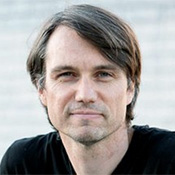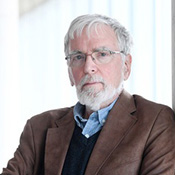The Government of Canada has invested $1.5 million in the innovative ideas of six Dal researchers.
It’s all part of the . Launched under the fund’s Exploration stream, the competition provides grants of up to $125,000 a year for two years for teams of two or more researchers.
The NFRF is a federal research funding program that fosters world-leading discovery and innovation by encouraging Canadian researchers to explore, take risks, lead, and work with partners across disciplines and borders. It is managed as a tri-agency program on behalf of the Canadian Institutes of Health Research, the Natural Sciences and Engineering Research Council, and the Social Sciences and Humanities Research Council.
The Exploration stream addresses gaps in the federal funding system to promote innovation. It supports research that defies current paradigms, bridges disciplines, or tackles fundamental problems from new perspectives. A key principle of this stream is the recognition that exploring new directions in research carries risk, but is worthwhile given the potential for significant impact.
In total, the Government of Canada invested $46.3 million in 186 research projects across the country that bring disciplines together in non-traditional ways.
“We are incredibly proud to have such a talented group of researchers call �°������ϲ� home,” says Alice Aiken, Dalhousie’s vice-president research and innovation. “The generous investment made by the Government of Canada will help provide them with the tools they need to perform cutting-edge research and enable innovative new discoveries.”
Highlights of successfully funded research include:
 James Forren
James Forren
Faculty: Architecture and Planning
Project: Gesture and Form: A Field-based Approach to New Methods of Architecture and Handcraft in Textiles Using Augmented Reality Technologies
This project unites researchers in architectural design and technology, human computer interaction (HCI), cultural anthropology and material culture studies, and constructed textiles to investigate the integration of Augmented Reality (AR) in handcraft and educational design.
Participants will use AR headsets to encode and guide sequential, step-by-step actions, creating a finished bead-work piece or building element. In the South Sudanese refugee community, the AR application expands existing forms for heritage documentation, recording gestures to initiate a process of encoding hand, tool and thread positions, and their sequencing. In the architectural studio, researchers learn from this embodied practice and explore communicating through sequentially stepped three-dimensional instructions for building.
 Amy Bombay
Amy Bombay
Faculty: Health
Project: Creating Ethical Space for Mi’kmaq Led Genetic, Epigenetic, and Other Biological Research in Nova Scotia
Mi’kmaq peoples continue to face health inequities disproportionate to the non-indigenous population in Nova Scotia. A greater appreciation of biological processes involved in health inequities, and their interactions with the environment, has been called for as advances in genetics, precision medicine, and other fields in biology and medicine have led to optimism for more effective prevention/intervention strategies.
Dr. Bombay’s project aims to reduce the inherent risks in research involving the collection of biospecimens in Mi’kmaq communities through the development of community led guidelines that researchers must adhere to, and identify strategies and next steps needed to achieve the long-term goal of a Mi’kmaq led biorepository. This will be accomplished by carrying out foundational community-based participatory research and training to build capacity and create ethical space for biological research led by Mi’kmaq communities that integrates their traditional knowledge and lived experiences.
 Ford Doolittle
Ford Doolittle
Faculty: Medicine
Project: Testing “It’s the song, not the singer(s)”: microbiomes to Gaia
“It’s the song, not the singer” theory was developed to legitimize and support claims that we and our microbiomes are units of selection (Darwinian individuals). This theory holds that it is the processes implanted, not the implementing taxa (individually or collectively) that are the relevant units, evolving through differential persistence and recruitment of implementing taxa, not differential reproduction.
“It’s the song, not the singer” engages and challenges traditional philosophical concerns about individuality, function, causation, emergence and hierarchy, is increasingly relevant biomedically (as in the new discipline of “microbiomics”) and should provide a much needed and novel theoretical underpinning for evolutionary biology and ecology.
 Brendan Leung
Brendan Leung
Faculty: Dentistry
Project: An avatar for every tumor: Using multiparametric profiling to predict the dynamics and fates of patient tumours
The microenvironments in which tumour cells reside are highly specialized, with gradients of nutrients (oxygen, glucose) and biophysical properties that give rise to heterogeneous cell populations and niches. While conventional radiation and chemotherapies are reasonably effective at shrinking tumours, a small population of cancer cells, some of which possess stem cell-like properties, are capable of altering their phenotypes to evade therapies, leading to relapse. Existing in vitro platforms cannot faithfully capture the heterogeneous cell population and niches found in patient-derived tumours (PDT), therefore the gold-standard for predicting the fate of “real” tumours and to assess therapeutic efficacy is to grow PDT cells in immunodeficient rodents to generate patient-derived xenografts.
Unfortunately, only a small number of PDT can be propagated in a PDX model. Moreover, a PDX model may misrepresent the true diversity and behaviour of corresponding PDT. Dr. Leung’s project will address these challenges by creating methods that can preserve the cellular diversity of patient biopsy samples in vitro while simultaneously tracking their growth and responses over time in the presence of antitumour agents.
 Melanie Zurba
Melanie Zurba
Faculty: Management
Project: Creating vocabularies and rituals for climate grief through multiple knowledge systems and the artistic process
This highly interdisciplinary project connects ecology and climatology (biological and earth sciences), art theory and practice (fine arts), mental health and social wellbeing (health sciences), and learning theory (social science) towards producing materials and knowledge that will support the development of visual and linguistic vocabularies and rituals for understanding thoughts and emotions associated with “climate grief”. Climate grief is a general term used to encapsulate negative emotions such as cognitive dissonance, sadness, and other forms of pain that people feel when experiencing loss associated with a changing climate.
This team will engage in a high-risk research collaboration at the volatile and often uncomfortable intersection of fields that produce different types of knowledge. This tension will be used to fuel an artistic process that will bind the different forms of knowledge and build expanded vocabularies and rituals for climate grief.
 Francesca Di Cara
Francesca Di Cara
Faculty: Medicine
Project: Healthy brain – how do nutrition and microbiota affect the neurodegeneration?
Neurodegenerative diseases (NDs) are incurable debilitating conditions that result in progressive degeneration and/or death of neurons. Alzheimer’s disease, Multiple Sclerosis and Parkinson’s diseases are examples of neurological disorder that are characterized by progressive problems with movement, or mental functioning that significantly impairs the patients’ daily life. The mechanisms of disease are still unclear.
Dr. Di Cara and her team believe that studying peroxisomes, metabolic organelles that contribute to maintaining the health metabolic status of the cell, on NDs development will shed light on both genetic and environmental factors (e.g. microbiota-nutritional metabolic factors) that controls the brain health. Their findings will help establish how dietary- and microbiota-derived metabolites control brain health; and how peroxisome activity affect microbiota-gut-brain axis in patients with NDs such as MS, opening the possibility to identify new disease markers or new targets for therapeutic intervention in these devastating diseases.
A full list of NFRF Exploration grant recipients can be found .
